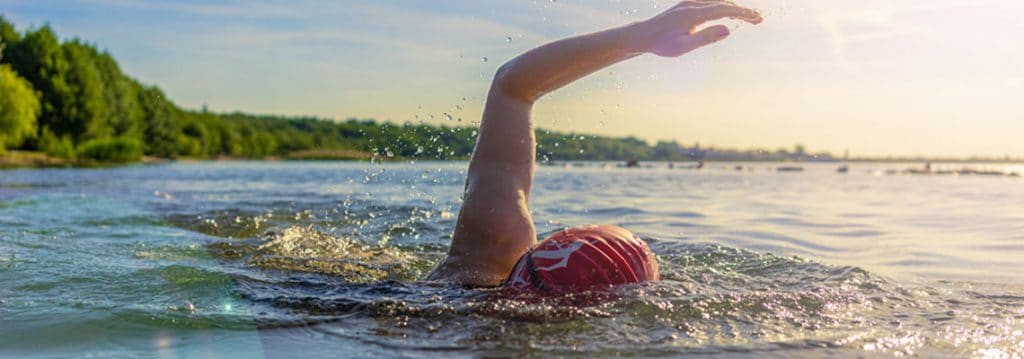Returning to Work Following Lockdown
Spring is finally here…
And The Government is starting to ease restrictions safely, which is exactly what the economy needs – but as a business owner, what does this mean?
Now is a good time to consider how you will make the necessary changes to your workplace to keep your team and clients feeling both safe and supported.
Sienna X has put together recommendations around the Coronavirus, these are only a guideline and advisable suggestions, please use these in addition to what the Government might suggest, we all know how quickly the Government advice can change.
These have been listed so that you may use them as a checklist, we hope you find them useful.
Consider these three main principles for your team members, clients and yourself:
- Being SAFE
- FEELING safe
- Feeling SUPPORTED
Personal Protection Equipment (PPE) and cleaning are probably the most important considerations and things you’ll need.
Cleaning Considerations and Differences
If you have not been to work for a long time, chances are there will be no trace of the virus on surfaces, however, it seems we will be in this new world for a while longer and getting into a routine will help keep everyone safe and contamination to a minimum.
Thorough cleaning and disinfecting are needed regularly on your return to work.
Cleaning is the same as sanitizing, it is a process that removes contaminants including dust, soil, large numbers of micro-organisms and the organic matter that shields them, such as faeces, blood, pus, urine and other body fluids. To ensure effective cleaning, the equipment used and the item to be cleaned should be in a good state of repair. Use soap and water, or chemical cleaners.
Disinfection is a process that reduces the number of micro-organisms to a level at which they are not harmful and is only effective if the equipment or surface is thoroughly cleaned with a detergent solution beforehand. The use of disinfectants, e.g., household bleach is recommended mixed as manufacturers guidelines.
Employees
Employees should be free from any sickness and temperature, they should be checked prior to beginning work, if you are going to record temperatures, then please ensure you follow the correct guidelines.
- You may want to consider personal items such as phones, bags and shoes being stored in a sealed locker or disposable bag.‚Äã
Staff Rooms
- ensure hand cleaning signs displayed
- a how to clean your hands for 20 seconds leaflet
Uniforms
Consider changing into uniform once at work if travelling on public transport
- Disposable Medical Grade Masks to be worn and changed each day
- Visors advised being worn and cleaned each day
- Disposable or Clean Aprons to be changed each day
- Dispose of used face masks, aprons and gloved into a closed bin
Clients
Check with clients to ensure they are free from any sickness and have not had contact with confirmed cases of COVID-19 in the previous 14 days.
Consider asking these questions:
- Have you been away/abroad?
- Have you tested positive for COVID-19 in the past 14 days?‚Äã
- Have you experienced the following symptoms now or in the past 14 days?‚Äã Such as a temperature, dry cough, body aches, headaches, sore throat, shortness of breath, loss of taste and/or smell, diarrhoea.
- Are you or your immediate family/friends in a high-risk category?
If a client responds with a yes to these, the beauty treatment should be declined and potentially rearranged for a later date, along with clients in high risk and vulnerable groups such as those of advanced age or with pre-existing medical conditions are currently advised not to get treatments.
NHS guidelines of individuals who are very high risk and high risk can be found here
Client Arrival
- Ensure social distancing protocols such as keeping 2 metres apart, are in place between clients and staff in reception areas, this can be best achieved by staggering appointments.
- Clients to use Hand Sanitiser on arrival
- Avoid all physical contact
- Offer your client the use of mask and gloves (optional)
- Therapist, if possible in front of the client to wash hands with soap and water for 20 seconds, before and after touching clients and after contact with used or unsterilized tools and surroundings.
- Gloves do not offer cross-contamination protection,nor are suitable for some beauty treatments, unless they are requested or Government advised, thorough hand washing for 20 seconds is currently one of the Government’s main recommendations.
- If gloves are used, change before and after touching clients and after contact with any used or unsterilized tools/equipment and surroundings.
Client Departure
- We recommend using contactless payments where possible.
- Ensure clients put any disposables they have used into a bin themselves.
Reception/Retail areas
- ‚ÄãRemove all magazines
- Suggest they bring their own tea/coffee/drinks, as well as books/magazines to enjoy as they wait
- All high touch areas to be disinfected hourly or sooner if visibly dirty/marked
- Retail testers to be wiped down with a clean disinfectant disposable cloth or wipe.
- Products packaged in jars are currently not advised as testers unless one person is opening and applying with a disposable applicator or disinfectable applicator. Apply tester product only to the hands
- Products should be stored in a cabinet or sealed container when not in use
- All hard surfaces to be wiped down as treatment room advice
- All non-porous, metal or plastic non-disposable equipment, as well as surfaces, must be cleaned and then disinfected before each use. pay particular attention to frequently touched areas and surfaces, grab-rails in corridors, stairwells and door handles
Treatment Rooms
- Wipe down all hard surfaces including door handles, light switches, equipment and products with a clean cloth and disinfectant or disinfectant wipes before each client treatment.
- Have a clean/disinfected area where clean tools and supplies can be made ready for use.‚Äã
- All professional use products shall be disinfected after each use and stored in a cabinet or sealed container when not in use.
Treatment Beds, Towels and Linens
- Must be covered with either clean couch roll, a clean towel or a clean sheet before each client. Only use blankets which are laundered after every client if needed in the colder months.
- Advise all linens are to be stripped down to vinyl covers on any type of beauty chair or massage table and properly placed in linen containers marked “USED‚Äù.
- After a towel, sheet, robe, linen, or hairdressing cape has been used once, it should be deposited in a closed container and not used until properly laundered ideally at 60 degrees.
Tools, Equipment and Supplies
- Have well-marked, covered containers for clean and dirty items, tools etc
- Non-electrical items should be completely immersed for at least 30 minutes in a registered bactericidal, fungicidal and virucidal disinfectant.
- Your electrical items should also be sprayed or wiped with disinfectant, mixed according to manufacturer instructions. ‚Äã
- When a disinfectant solution is used for immersion, it should be clearly marked and changed daily.
- All single-use items should be disposed of after one use in a closed waste container.
Toilets/Shower Rooms
- Advise to clean every hour, ensuring checklist is signed
- Pay particular attention to frequently touched areas and surfaces, such as taps and handles
- Consider using disposable paper hand towels
- Handwashing signs displayed clearly
- Leave disinfectant wipes and gloves, so clients may use if they choose to
- Touch-Free Soap and sanitising hand gel dispensers are a great idea too
Remember these are only advisory guidelines, for further information, you can visit the Government website here or World Health here
If you have any post-COVID 19 tips you would like to share with us, then we would love to hear them, please send them to [email protected]
Coronavirus Facts
(Source World Health Organisation)
Coronaviruses are a large family of viruses which may cause illness in animals or humans. In humans, several coronaviruses are known to cause respiratory infections ranging from the common cold to more severe diseases such as Middle East Respiratory Syndrome (MERS) and Severe Acute Respiratory Syndrome (SARS). The most recently discovered coronavirus causes coronavirus disease COVID-19.
COVID-19 is the infectious disease caused by the most recently discovered coronavirus. This new virus and disease were unknown before the outbreak began in Wuhan, China, in December 2019. COVID-19 is now a pandemic affecting many countries globally.
How can we protect others and ourselves if we don’t know who is infected?*
Practising hand and respiratory hygiene is important at ALL times and is the best way to protect others and yourself.
When possible maintain at least a 1 metre (3 feet) distance between yourself and others. This is especially important if you are standing by someone who is coughing or sneezing. Since some infected persons may not yet be exhibiting symptoms or their symptoms may be mild, maintaining a physical distance with everyone is a good idea if you are in an area where COVID-19 is circulating.
How long does the virus survive on surfaces?*
The most important thing to know about coronavirus on surfaces is that they can easily be cleaned with common household disinfectants that will kill the virus. Studies have shown that the COVID-19 virus can survive for up to 72 hours on plastic and stainless steel, less than 4 hours on copper and less than 24 hours on cardboard.
As always clean your hands with an alcohol-based hand rub or wash them with soap and water. Avoid touching your eyes, mouth, or nose.
For more advice and guidance, be sure to follow us on social media via our Instagram & Facebook pages.




